-
News & Trends -
Sales -
Marketing Related Topics -
B2B Software Guides Related Topics -
Free Tools & Resources -
- About Us About Us


Local lead generation is the act of attracting regional leads to your local business and converting them into interested prospects. This typically includes brick-and-mortar companies such as car dealerships, restaurants, retailers, and law offices. It can also include service businesses that perform work at local job sites, such as contractors and landscapers. The goal of local lead gen is to attract relevant local leads into your pipeline to then further qualify and nurture.
There are many free and paid strategies for generating local leads. First, all local businesses should create an ideal customer profile so they know whom to target, as well as get listed on local directories and review sites. From there, there are various local lead generation tactics according to business type, marketing bandwidth and budget, and overall sales process. Local businesses will typically combine one or more of these strategies into a repeatable lead gen process.
The general process for creating an effective local lead generation system includes:
You can implement these steps and the associated strategies yourself or hire a lead generation company to help you. Certain types of software can also lighten your workload and take your lead generation to the next level. With proper local lead generation, a steady stream of new leads will discover your business for as long as you keep it going.
There are nine main strategies for generating leads for your local business. We recommend trying all of the strategies below in the order they're listed, although you can pick and choose according to what you believe is a good fit for your business needs. Regardless of whether you implement all or some of the strategies, you must get your business listed on local online directories, so we'll start with that strategy below.
First, get listed in your area on online ratings and review sites like Yelp, Google My Business, or Facebook. Over time, businesses listed on these sites accumulate positive reviews and clicks. As this occurs, their rankings in search results improve, so more searchers find them.
Here’s how to get your business listed on these three important sites:
Getting your company on these sites helps you make your website more discoverable to searchers in the area and thereby win more leads. You can use a range of best practices to convince search engines that your business location deserves a high ranking in the search results — to learn them, check out Moz’s local SEO guide.
Here’s an example of this strategy in action. Imagine you’re craving a back massage, but you don’t know what businesses are nearby or open. You turn to Google and type in “back massage Manhattan.” Google’s ranking algorithm takes into account data like a business’s local content, social profile pages, links, and citations. It then provides users with the most relevant local results.
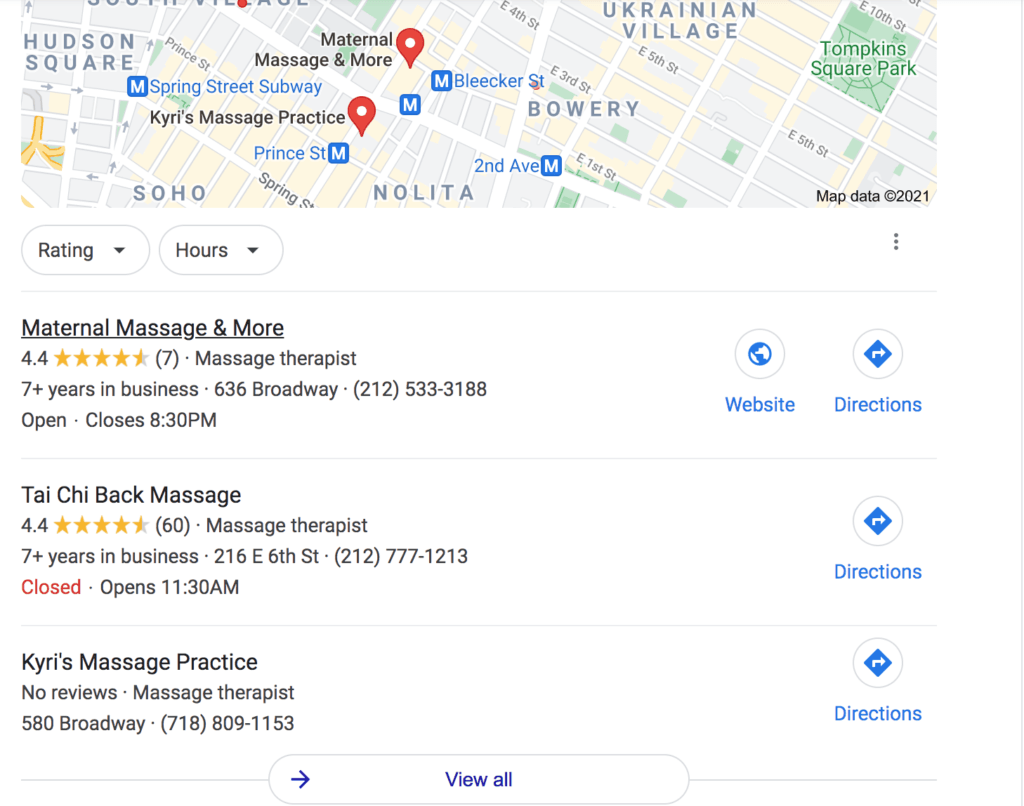
While it can take months for your page to rank, once it does, you’ll start earning free traffic to your website or landing page, which we'll talk about next. Or, better yet, leads will start walking over to your business and saying hello.
Ask your customers how they discovered you with an online or in-person survey. That way, you can tell which investments are paying off. Often people google “donut shop” and walk to the closest one without clicking the site, making your efforts hard to track.
After you've listed your business on all the key sites so your potential customers can know you exist and how to find you, consider creating a landing page to direct them to and a lead magnet to offer them once they reach the page. Let's dive further into landing pages and lead magnets.
A local landing page is a web page built to attract potential leads in a specific geographical area to your business. Businesses with multiple locations should have a landing page for each that contains information about that particular location; this helps customers find them. Two local landing pages from the same business might have different information on their events, menu, phone number, address, hours of operation, and services offered.
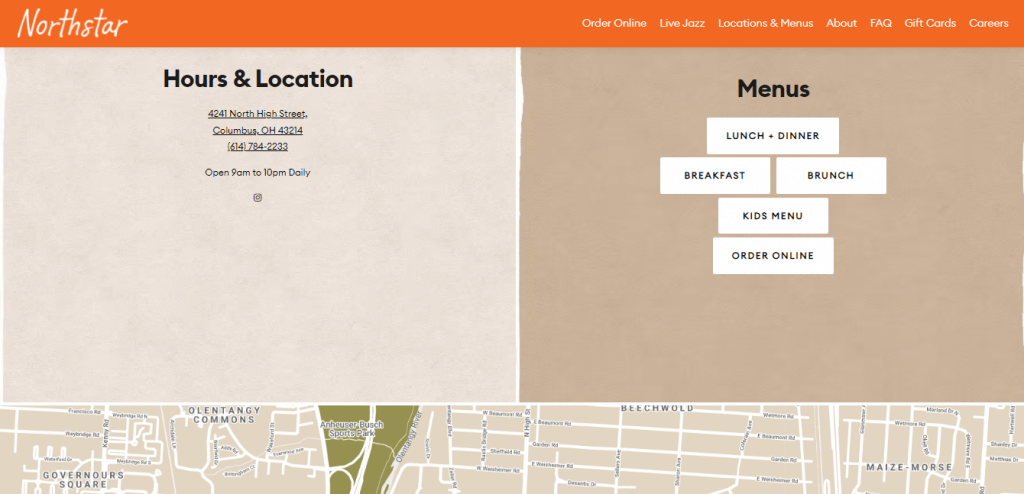
Creating local landing pages for each of your business’s locations allows you to provide the crucial information your potential leads need when researching your business online. Therefore, you’ll heighten the chances the lead will visit or call your location. Building a landing page is easy when you have software solutions on your side — use a landing page builder to help you create one.
Check out our article on the best landing page builders — there, you'll find information on the top options' prices, use cases, features, and more to help you decide which builder is best for your business.
To capture the contact information from visitors, offer a lead magnet, aka a content upgrade, on your landing page. This is a valuable resource that the lead can receive if they give you their contact information. In location-specific businesses, these offers tend to be in-store discount codes, promotions, reservations, free trial codes, or free consultations, but they can also be ebooks, checklists, or other useful documents.
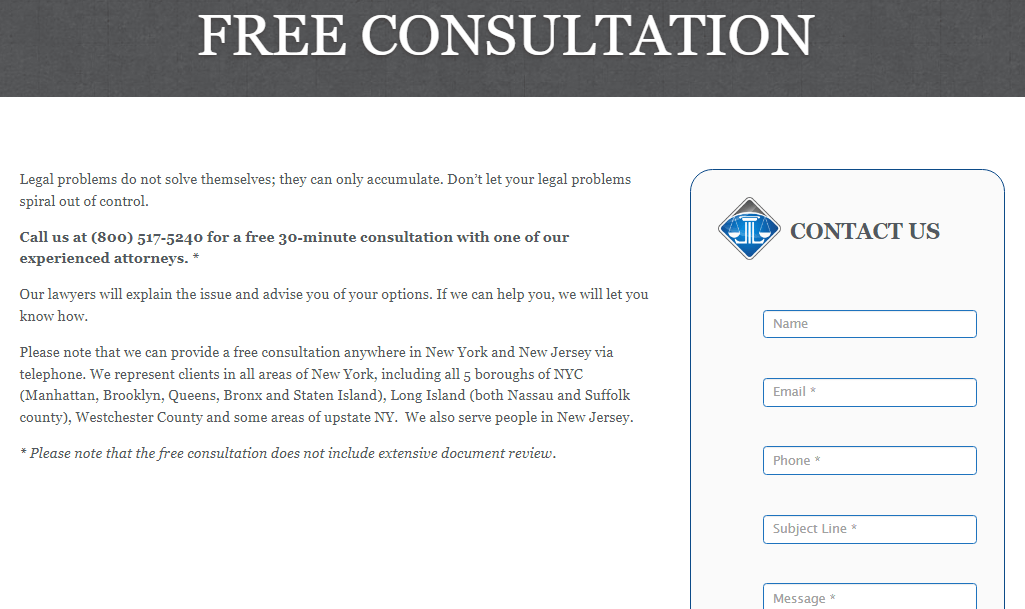
Lead magnets not only help you attract first-time leads to your store, but they also give you the information you need to keep them interested or coming back. For instance, if you collect local leads' email addresses, you can then use email nurturing to stay relevant — this means you can continue marketing to them through emailed coupons or other offers that will inspire them to visit you or your landing page again.
For more on content upgrades that will inspire your landing page visitors to give you their contact information, see our guide on how to create your own lead magnet that converts, including detailed steps and effective examples.
Now that you have a landing page and lead magnet, it's time to build a local organic social community; you can then share your page and magnet with your new followers. To do this, create social media accounts across Facebook, LinkedIn, or other platforms and share free content your common buyer will enjoy. If they like what you post, they will start to consume more of your content, which will help them grow interested in and start to trust your business.
Here are some best practices for building a local social media following:
Johnny Velo Bikes' Facebook post below offers up an example of a creative and effective local social media post. Within one post, they involve and thank a customer and subtly promote one of their bikes without making an ask. Instead of sounding salesy, the post comes off as a helpful way for potential customers to understand whether this bike could also fit them. The post also features a dog, which many followers will connect with:
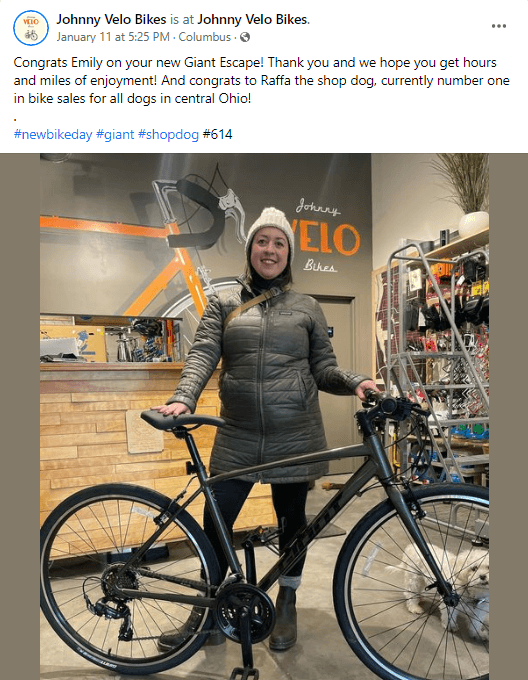
Managing and growing a social media following relies on your ability to provide valuable content to them, not on your ability to pitch your products or services. Every fifth post, you can include a call-to-action about an upcoming deal or a new product to get new leads into your location, but avoid relentless selling. Focus the majority of your posts on the three “Es” of social media marketing instead: educating, engaging, and entertaining.
If you want to learn more about how to generate a following and leads through social media, check out our ultimate guide on social media lead generation, where we give you an overview of the strategies for the major social media platforms and help you choose which platform to use.
While you're attracting potential customers on social media, also get out into your area and network with people to indirectly promote your business. Attend local events where your potential buyers hang out, and then strike up conversations with local residents and invite them into your store. If they don’t need your product or service, they might know someone who does.
Below are the specific steps to generate leads through networking:
The top business networking event types include trade shows, industry conferences, networking groups, local meetups, and online groups and events. As a local business, you can also try promoting your product or service at local festivals and markets to meet like-minded people who could be good customers.
For more on the types of networking events and how to use them to your advantage, read our ultimate guide on business networking. There, you'll discover detailed information on the steps involved in networking plus additional tips to do it well.
Take networking a step further and start creating and cultivating new networks, otherwise known as in-person community building. Here, you’re essentially facilitating and cultivating relationships between people with similar interests. Host or sponsor events where potential leads will meet each other and participate in a group activity, all the while getting to know your brand and staff. For example, a local fantasy bookstore might hold weekly hour-long readings for kids in the area.
Below are some effective community building ideas:
The best part about community building is that it’s intrinsically valuable. Even if you fail to generate any leads from your efforts, you will gain priceless value-adds to your life, including leadership skills, a sense of purpose, and friendship. Plus, the people in the area will appreciate the community you’ve created for them, and your brand will therefore be top of mind to them, meaning they could turn into leads and customers down the line.
When you meet someone at these events, avoid pitching them on your business. Sooner or later, they will ask you what you do. Let it flow naturally. Brand awareness and sales will come eventually. Right now, focus on taking interest in them. It’s a lot easier to make connections that way.
Next, ask for referrals from current customers or people you meet through networking or community building. You can receive referrals for free, or you can create marketing campaigns that incentivize customers to tell other people about your business by giving them rewards in exchange for the new customer. There are many effective strategies to earn referrals, some of which require more time, effort, or money than others.
Below are the main ways to generate referrals for your business:
There's also software that can help you with some of the ways above, such as PartnerStack or Ambassador for referral discount or rewards programs. Consider starting with the easiest, most affordable ways to earn referrals, like simply asking for them from your network or customers. Then you can add on some of the more structured, sophisticated programs when needed.
To learn more about each of the seven main strategies above, read our article on the top ways to generate business referrals. In the article, you'll find the key details on each strategy so you can choose between them and start to implement the ones that you believe will work well for your business.
When you've gotten the word out about your business, you can then start incentivizing leads to actually visit you. Create savings deals and activate creative pricing strategies, then advertise them to your target audience in the area. Bargain shoppers love buy-one-get-one-free deals, 50%-off sales, or free appetizers with a certain entree. You could also hold an in-store event that attracts people to your location, like a book reading from a famous author that you pay to attend.
Below are some tried-and-true ideas for implementing in-store promotions:
Here's an example of a contest that offers a giveaway to the winner. Strand Book Store created the promotion and then posted it to their Facebook page and website to get the word out. This is a good example of an online promotion that could result in in-store visits:

If you get these deals in front of the right people, in-store or online promotions can be a great way to draw people to your store, office, or website. Plus, your business can get rid of some slow-moving stock or get a quick boost in cash flow during slow periods. Think through what you could give to your leads, especially anything that won't cost you much. That way, you'll build relationships but have money left over for online ads, which we'll look at now.
Another way to invest in traffic to your website is by using pay-per-click (PPC) advertising, aka running Google Search ads that target keywords relevant to your business. Through local PPC ads, you can target location-specific relevant keywords like “chiropractor San Diego County.” These ads then show up in the top 2-4 search results for the keywords you target, and you pay a small price whenever a user clicks on your ad.
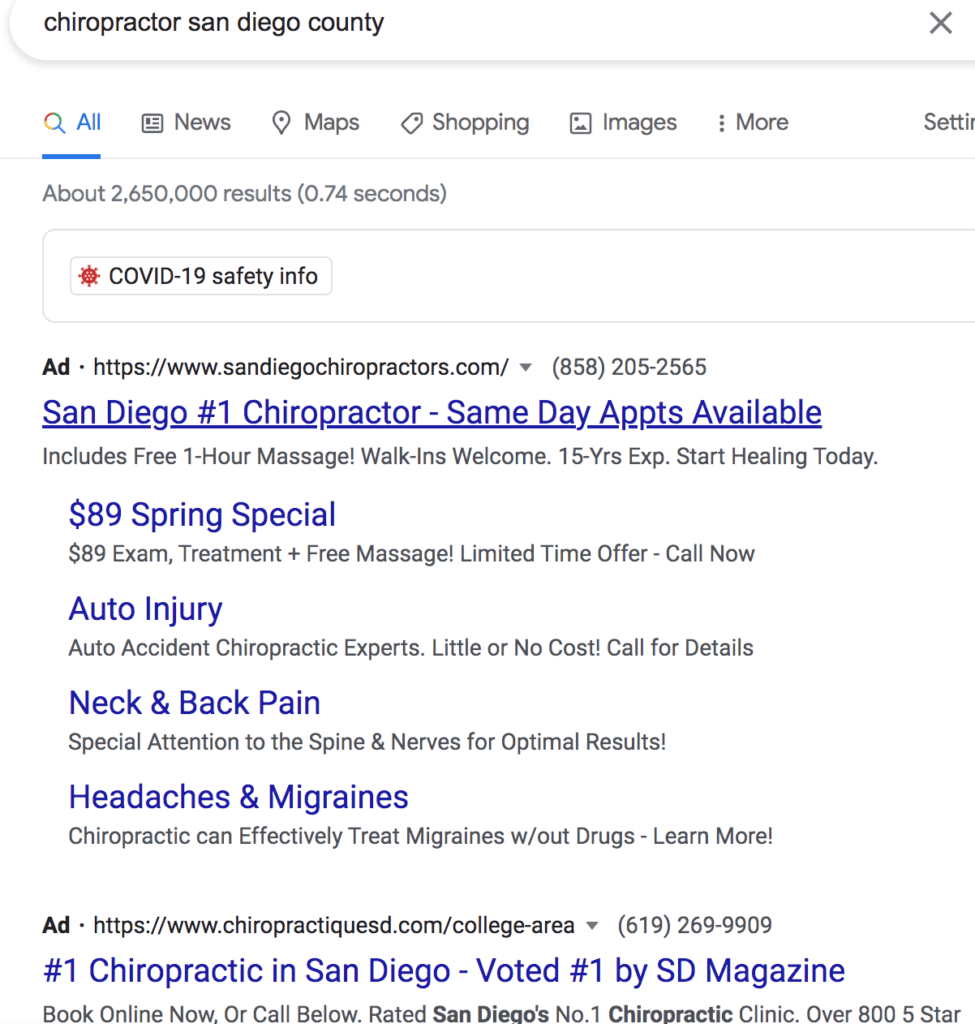
Below are the high-level steps to set up your local Google Search ad:
There are also several best practices that will help you write an effective Google ad, including writing the keyword in the headline and listing your most sought-after services so the searcher can see that you solve their need, including testimonials and reviews to foster trust, and mentioning your lead magnet to inspire clicks.
The power of Google Search ads is that your business offer appears in front of searchers who are in a buying mood. Unlike organic search, the results for PPC ads are often immediate. Once your campaign is live, you can start advertising to potential leads in your area and watching the traffic roll in. However, beware that even though the Google ads show up at the top of the page, users are still far more likely to click on organic results — this is true for social media ads too.
For more on PPC ads, read our article on PPC lead generation. There, you'll find details on each of the steps involved in setting up the ads (which can also be applied to local campaigns), examples of great ads, and benefits and drawbacks to consider.
Like PPC ads, most social media platforms offer advertisers the ability to create ads targeted to people in a specific region or location. This means that your ads are appearing only on the news feeds or inboxes of people within a defined proximity to your business location — a certain region, city, metro area, or zip code. You can also target based on other specifications so that you’re reaching only your ideal customers.
Common targeting factors include:
Because of how targeted they can be, region-specific social media ads are a staple in most local lead generation campaigns. These ads can tell people to come to your store, they can instruct them to click on a lead magnet that will sweep the interested users away to your landing page and then request their information, or they can collect their details directly on the platform to reduce friction, such as in Facebook lead ads and LinkedIn lead gen forms.
If you'd like to advertise on social media but you don't have the time or expertise to set up and monitor a campaign yourself, you can also hire a social media advertising agency to help you. Each of these nine strategies tends to bring impressive results, and there are agencies and software to help with most of othem.
Remember that successful lead generation is not only about getting them to make a purchase right away, but also about capturing their contact information for further nurturing. When you have their email address or phone number, you can continue to market to them, build their trust, and familiarize them with your brand until they are ready to make a purchase.
Local lead generation strategies can seem like a lot of work, but there are some powerful software solutions out there that can enhance portions of your lead generation strategy. Let’s cover four of the best solution types, what they do, and whether you should use them for your specific business.
Marketing CRMs can help you generate leads via Google, social media, and your website, then nurture them via email. Marketing automation can also execute tasks for you according to how you want to generate leads, and website tracking will tell you whether your online efforts and landing pages are working. Local businesses that want to better define and speak to their target audience can benefit from this type of platform.
For more on these CRMs, check out our guide to the best marketing CRMs available. There, you'll find details on the top options, what they offer, and how much you should expect to pay.
Depending on the local lead generation strategies you choose to try, you'll find some of these software types to be more helpful than others. As you decide which strategies you believe will best help you generate local leads, keep these platform options in mind so you can track your results and stay organized in your efforts.
There are a few key tips that can help you successfully execute the nine strategies above. Take a look at the below to learn how you can impress your leads by providing value, prioritizing the right paid strategies, clearly listing your multiple brick-and-mortar locations if you have them, and improving the look and feel of your website.
Whether you create a lead magnet, publish an SEO blog on your site, or try another strategy to get noticed by your audience and collect their contact info, focus on providing value to them. This way, they'll start to view you as an expert in your field and feel as if you have their best interest at heart, so they'll be more inclined to buy from you.
When you're ready to add paid strategies to your existing free efforts, direct the majority of your time and money to the ones that make the most sense for your business. Service-based businesses may find referral discount or rewards programs helpful, while those who sell products might want to try promoting a giveaway via social media ads.
If your store or restaurant has multiple locations, make that clear for your leads. List each one on local directories so that when they Google them, all of your locations pop up on the map. Create separate landing pages for each one, and list all of your locations on your home page and social media profiles.
When your leads end up on your landing page, make sure it looks professional and legitimate so they'll be impressed and start to trust you and your offering. Consider hiring a developer on [fitlink slug="upwork-1"]Upwork[/fitlink] or another platform to help you build it.
These best practices largely help improve your leads' view of you as well as their understanding of how to find you and whether you can help them. With these strategies and the associated tips, you should see a spike in the amount of leads you generate for your local business.
Local lead generation is an ongoing process of finding new people who would benefit from your business and attracting them to your physical location. You can do this through various online means, but don’t forget the human aspect of local lead generation. Your business is a part of the community in which it resides. It supports and benefits the people who live there. So go out and meet those people, learn about them, and invite them in for a visit.


Sam is a former SaaS sales rep turned freelance writer. He spent his career selling real estate technology to C-suite executives before switching over to blogging, where he now covers sales, marketing, and small business topics. Sam specializes in lead generation, lead nurturing, and deal closing articles for Selling Signals. When he’s not researching the latest sales trends, he’s either penning short stories, hiking, or reading in NYC’s Washington Square Park.

Selling Signals delivers actionable advice for sales and marketing professionals. Learn strategies that help you hit targets, strengthen customer relationships, and win more business. Get expert advice on lead generation, sales processes, CRM software, sales management, and account management directly to your inbox.
Property of TechnologyAdvice. © 2025 TechnologyAdvice. All Rights Reserved
Advertiser Disclosure: Some of the products that appear on this site are from companies from which TechnologyAdvice receives compensation. This compensation may impact how and where products appear on this site including, for example, the order in which they appear. TechnologyAdvice does not include all companies or all types of products available in the marketplace.